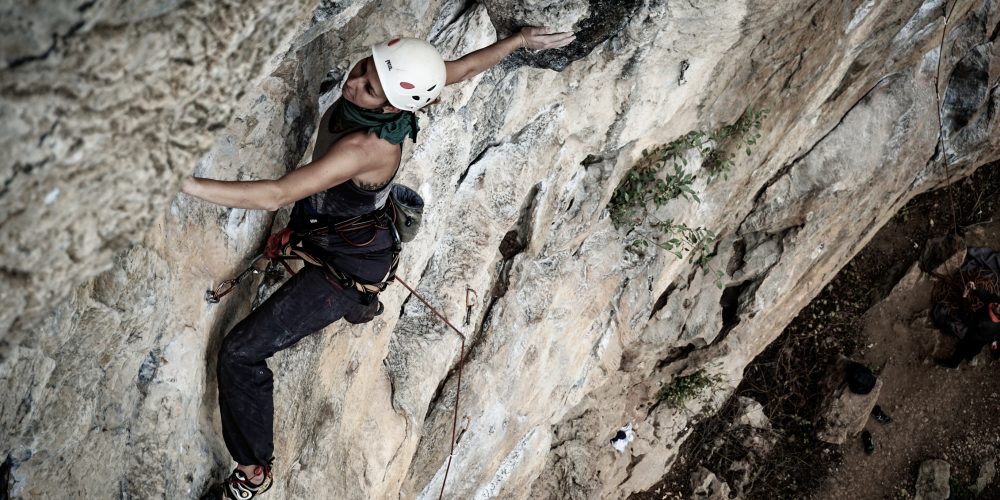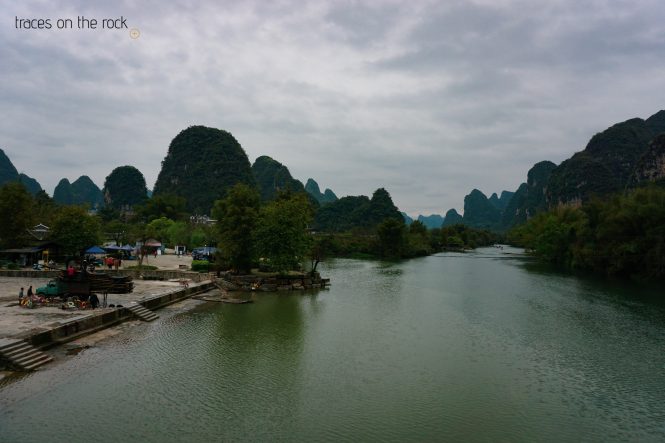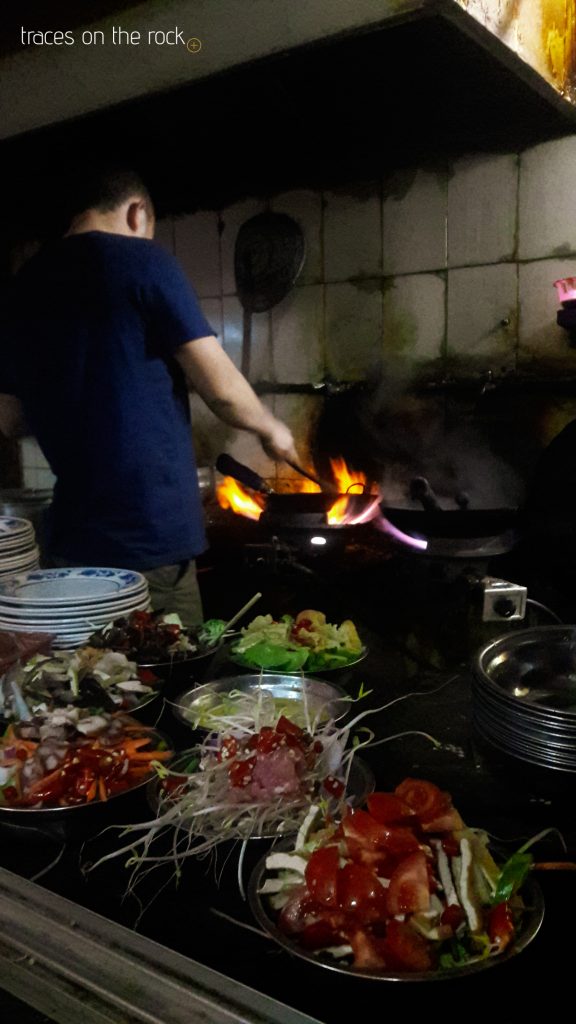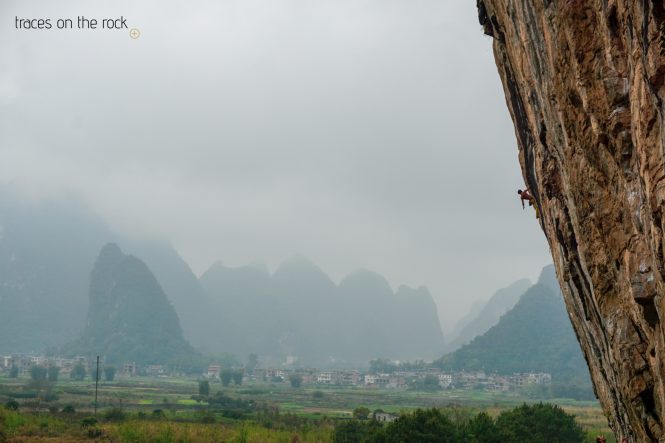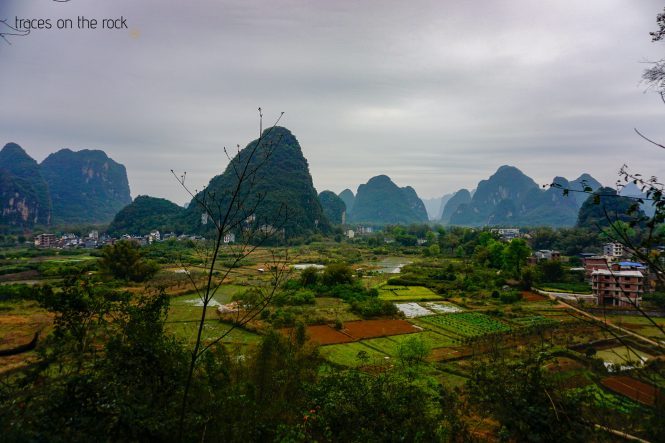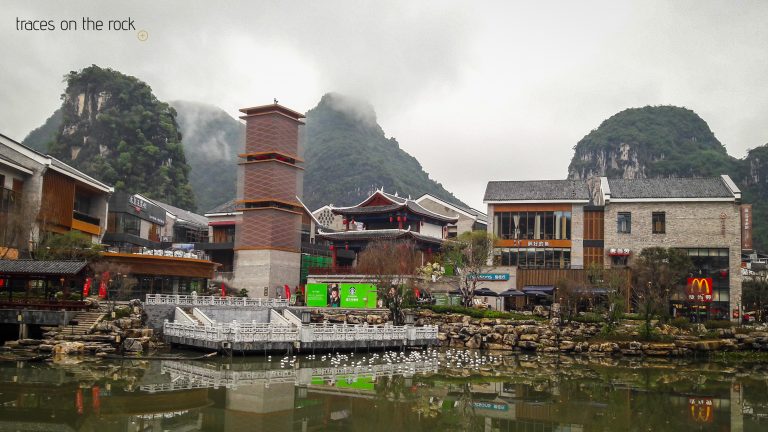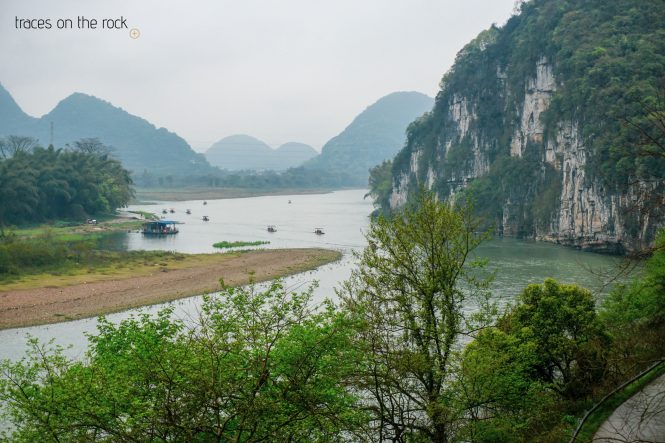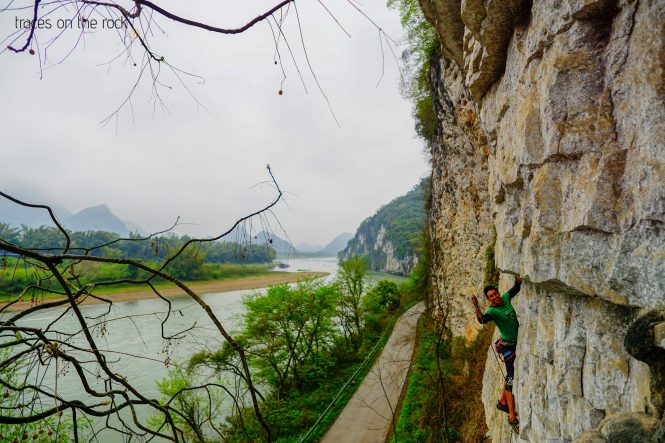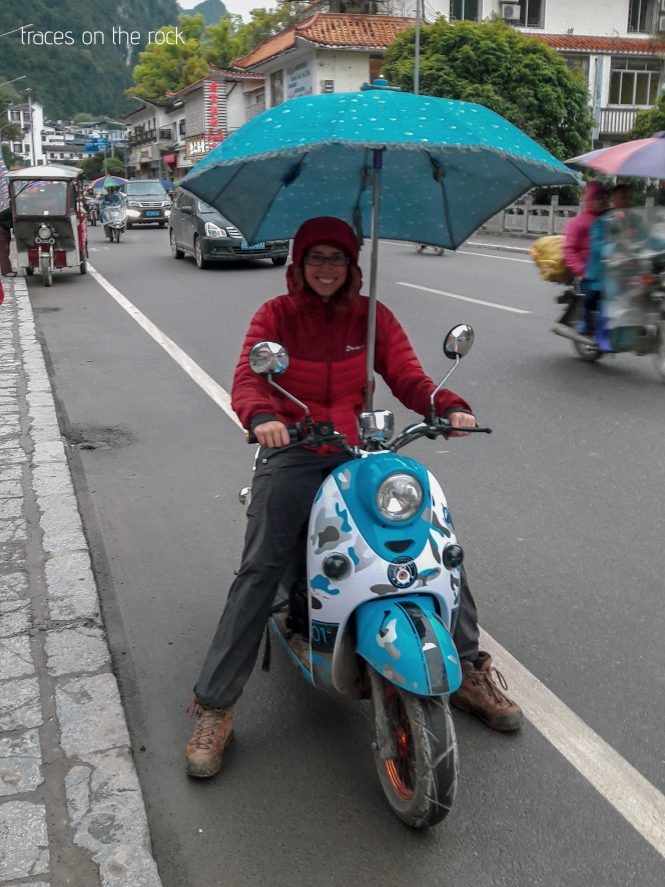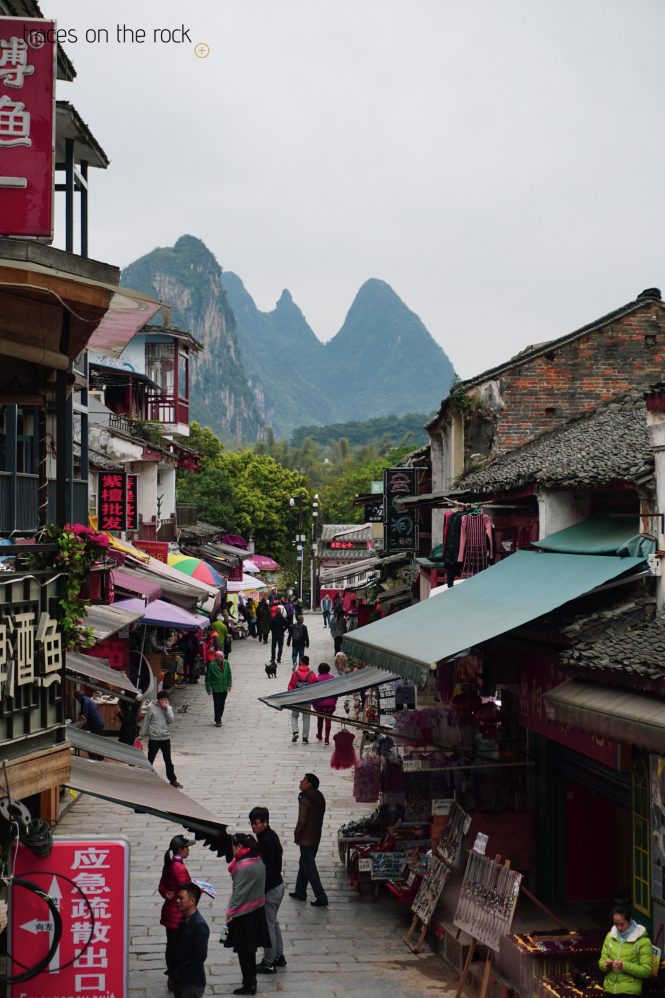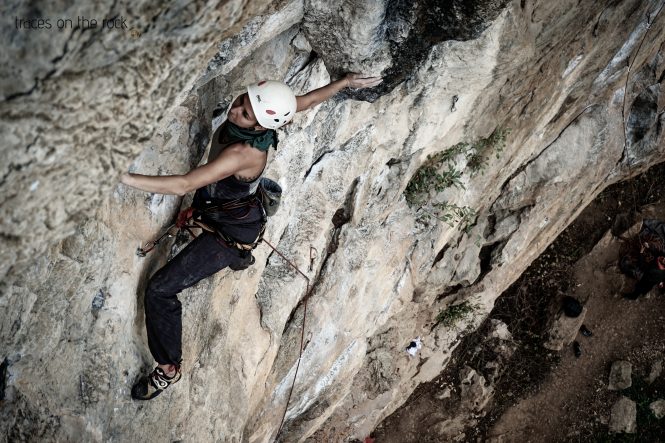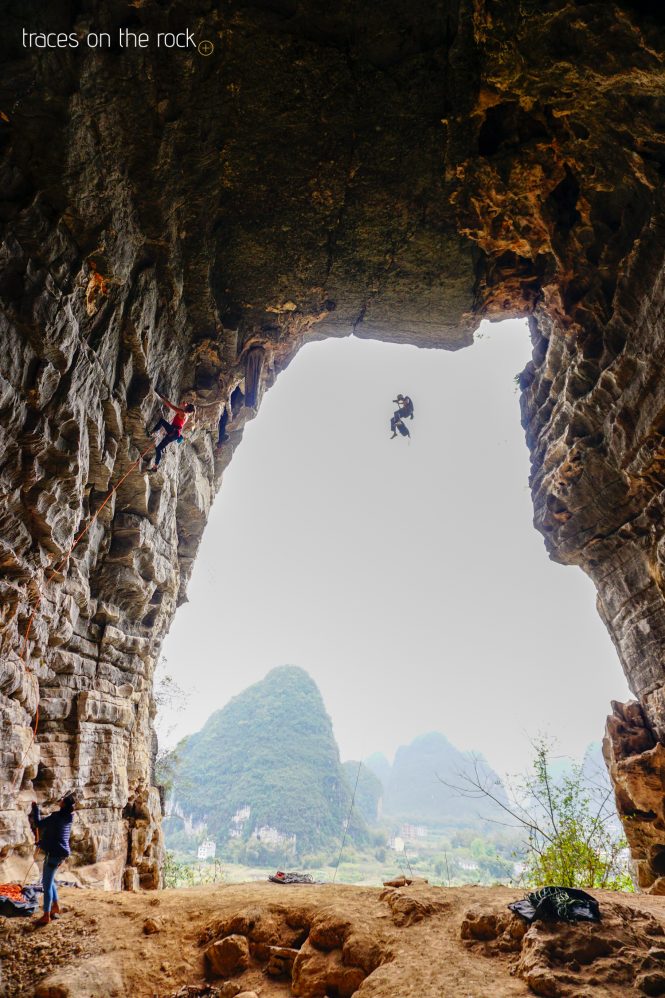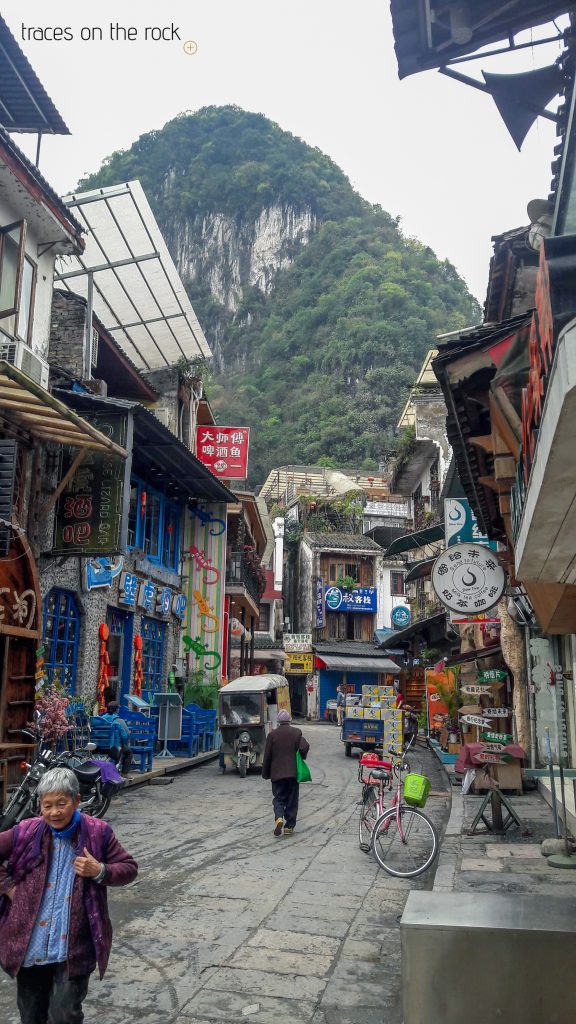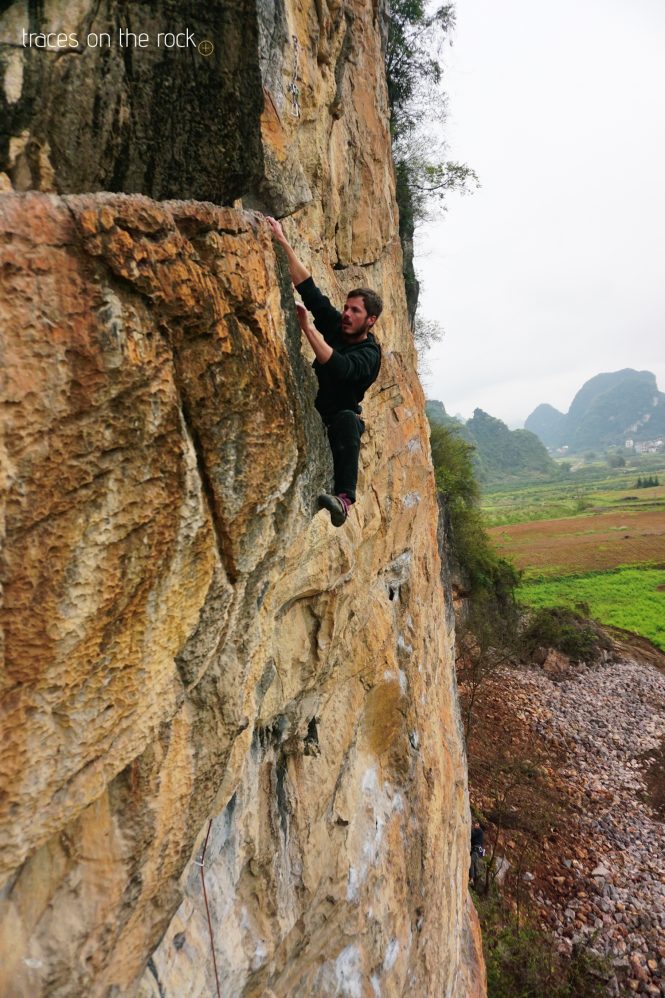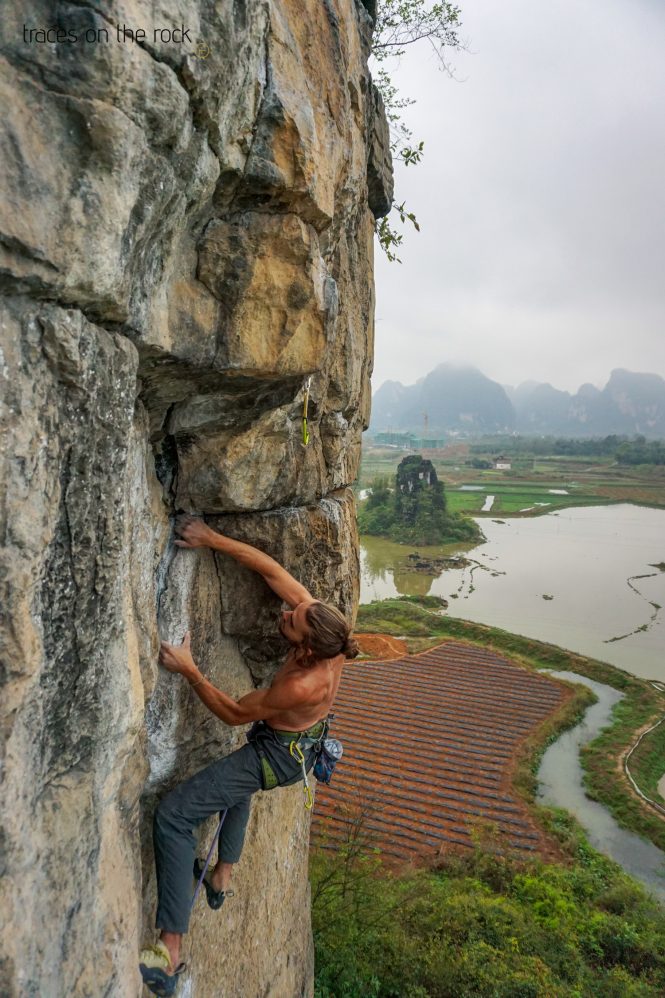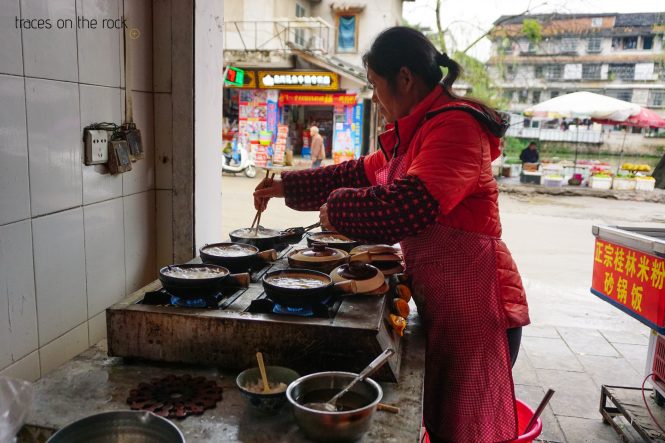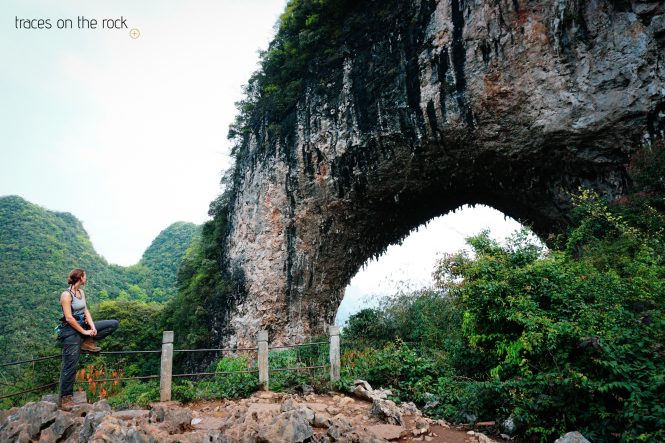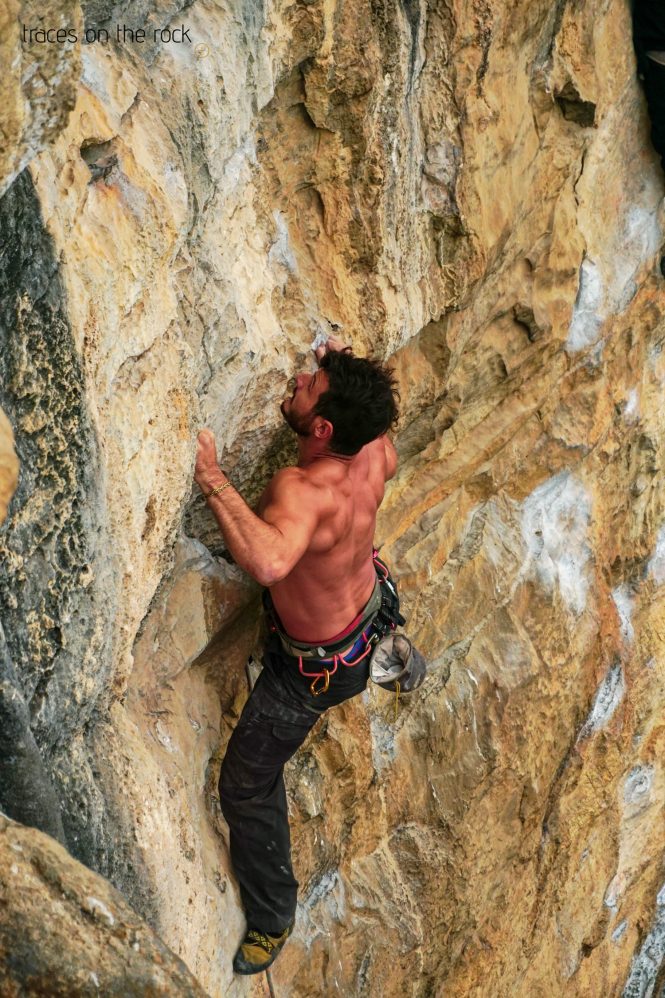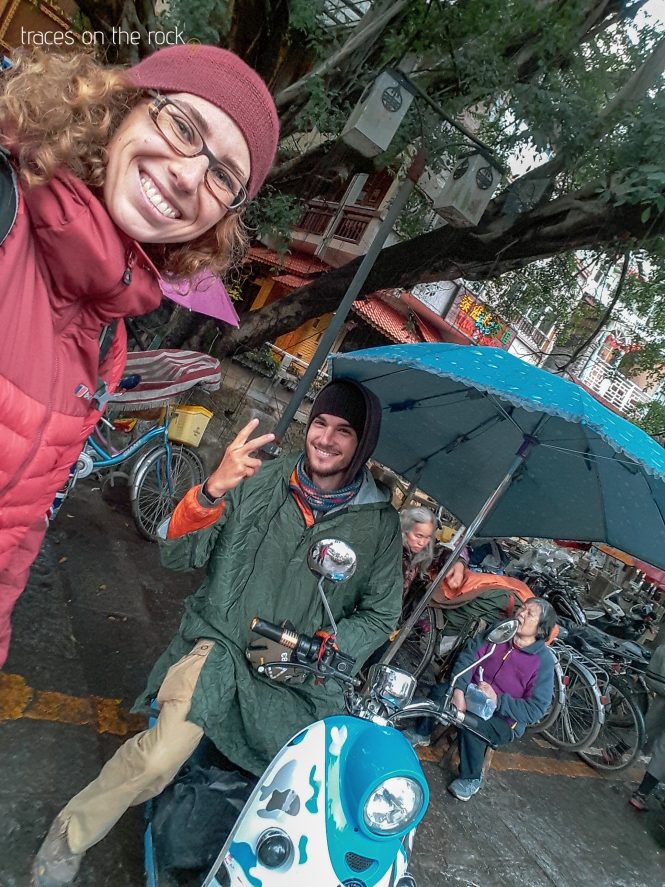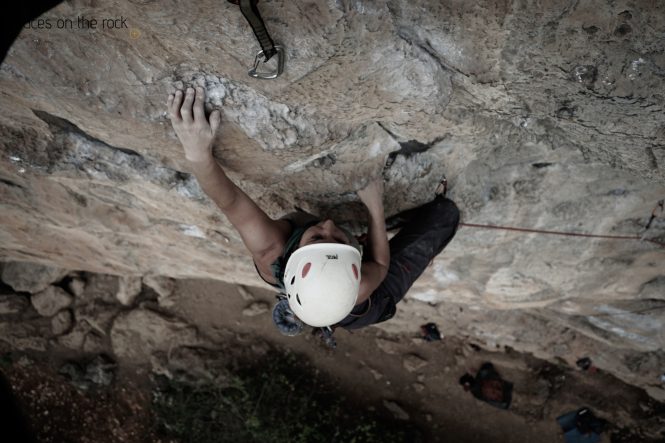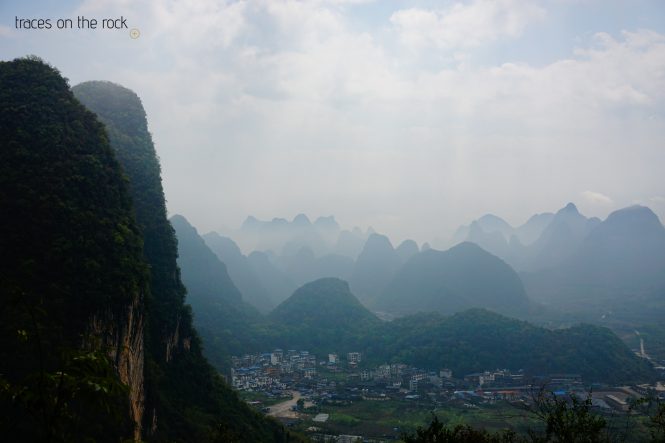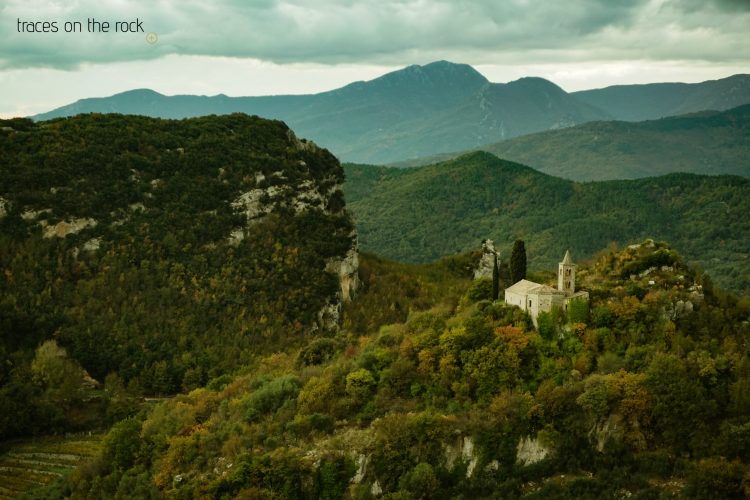Yangshuo is a well-developed tourist city. Low-traffic areas, old paving blocks, Chinese-style houses, water ponds, small streams and bridges form a symbiosis with numerous restaurants, accommodation and shopping center. The city is full of tourists who are pushing through the scenic roads. Shops try to attract potential customers to their stores with live performances. Woman are dressed in the fashion of ethnic minority. They crushing Chilies with their feet in large wooden containers – always with a smile on their faces.
In addition, the region is rich in cave systems. Often I wondered why caves could not be designed more atmospherically with differently coloured light (without promoting plant growth). I found the answer in China. The Gold Water Cave shone in an unbearable jumble of colours. The impressive dripstone sea stifled under the lighting obsession. Worse I had to experience in the Dragon Cave. The whole cave was concreted. For a long time I was irritated by the walls, floors and ceilings, from which a few stalagtite or stalagmites grow. However, the entire cave was smoothly concreted. I could have overlooked the colour illumination, the photo and printer stations, the small souvenir stalls in the cave system and the artificially installed sculptures and water basins if the cave had not yet been completely deprived of its natural appearance. And this was not only the case on the cobbled tourist routes, but in the entire, visible area. I am now more than grateful that the preservation of the caves was more important than the tourism in Germany.
Bamboo raft and kayaking on the Li river are a popular activity as well. I avoided it because my accomodation had no heating system which is required when you get cold and wet from the above and from below. In addition, the Chinese have the weird habit to leave doors open even at low temperatures. Every restaurant, every hotel, every store has the policy of the open door. I watched people sitting in their winter jackets inside. Every now and then I saw people muffled under blankets, which concealed a small electric heating coil. Such a weired habit in my view.
Climbing in Yangshuo
Let’s talk about the important stuff! Climbing in Yangshuo. Rock climbing! More than 400 routes in the grades ranging from 5.6 – 5.14 awaits the climbers. The climbing community in Yangshuo is international, albeit fluctuating, as the majority is only climbing for two to four weeks. Nevertheless, I had no trouble finding nice climbing partners in the famous Climbers Inn. The owner, Lilly, is climbing herself and had many good tips regarding climing spots or food. Since Lilly took me to a street food place on the first night, I was eating there every night. Guest select their vegtables, meat, fish or tofu from a former freezer. The bowl of ingredients will be stir-fried with some seasoning. Five minutes later your meal will be served on your table with a pot of rice. The whole meal costs less than 1.50€. Eating at this “stirfried place” became a ritual after a day at the crag.
Yangshuo is known for its heavy climbing on overhanging walls. These and the many caves made it possible to climb on dry rocks even on rainy days. And it was raining every day. Big jugs, crimpes, rails, sloper and tufa were the dominant style of the holds. In the overhang, however, this is quite demanding. Since I am not good in climbing overhang route, I had to downgrade my level of performance. That was frustrating! Shortly before I left Yangshuo, however, I discovered some technically demanding face-climbing walls (The Egg) and finally enjoyed climbing in my style. My mood was saved. After 10 days, I decided to travel further and explore China – albeit with a wistful heart. Since March 2017 a new edition of the climbing guide “Yangshuo Rock Climbs” is available. It also provides information on accommodation, transport services, food and drinks or guided climbing tours.
Climbing in China has become more and more popular in recent years. Since the 90s, the expansion of sports climbing routes has been steadily increasing. Being more popular than ever is surely based on brands such as Petzl, who e.g. produced their documentation Petzls RocTrip of 2011 in China which made the Moon Hill with its distinctive appearance a popular climbing destination. Unfortunately, the rock was completely wet and slippery when I climbed at this place. Likewise, some routes were characterized by long distances between the bolts, which meant that my enthusiasm was limited under these unlikely conditions. I am curious how the climbing in China will develop in the coming years.

